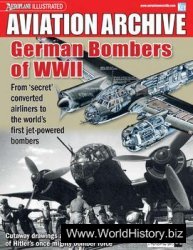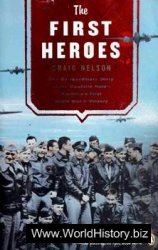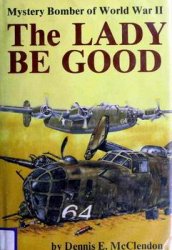The struggle against the V-weapons was not the only “diversion” required of the strategic air forces. For months after D-Day, immediate support of the armies in Western Europe took precedence over strategic attacks on Germany, and this must be appreciated if the true nature of the strategic air war is to be understood. Between June and August 1944, because of the demands of the land battle and the attacks on V-weapons sites, only a little over a third of the bombs dropped by the American strategic air forces and only a sixth of those dropped by Bomber Command fell on targets in Germany. Despite this, as we shall see, they struck decisive blows against the German war effort.
The effects of the operations of the heavy bombers, and their escort fighters, in support of the armies are often hard to distinguish from those of the Ninth and Second tactical air forces, but were undoubtedly considerable. In turn, the liberation of France aided the strategic air campaign. By destroying the German early-warning system and enabling the British to push forward their electronic guidance systems and countermeasures, it helped change the balance of strength at night. And large numbers of German fighters were sucked into the battle for France, further undermining what remained of the air defense of Germany itself
On D-Day the Eighth Air Force’s fighters joined the other Allied air forces to protect the landing, but its operations over Germany had already insured that the German reaction to D-Day would be belated and far weaker than anyone had expected. While Bomber Command attacked ten major coastal batteries, over a thousand American heavies tried to drench the beach defenses with bombs. But overcast forced bombing on H2X, and to avoid hitting the landing craft nearing the beaches, the bomb release was delayed. As a result, the bombs fell well behind the defenders. Attacks on “transportation choke points” in the city of Caen and elsewhere proved more successful, helping tp delay the 21st Panzer Division’s counterattack against the British, the only serious German countermove on D-Day.
After D-Day the strategic air forces returned to isolating the battle area. The heavy bombers interdicted the Loire crossings, which were far from the mediums bombers’ bases. The Eighth’s fighters joined the tactical fighters in attacking every daylight movement. Bomber Command wrecked the German bases for motor-torpedo boats and other light craft at Le Havre and Boulogne, smashing a threat to the cross-Channel supply route. The Eighth Air Force conducted a different sort of special operation; on June 25 it carried out the first of four massive air drops of supplies to the resistance forces in southern France.
The pre-invasion attacks on French airfields now paid off. As nearly a thousand planes rushed from Germany to France, they found the bases there overcrowded and in poor shape. “Ultra” and lower-level code breaking disclosed the destinations and arrival times of the reinforcements and helped the Allies ambush them as they came in to land. The transfer of German fighters westward merely threw the outnumbered, deteriorating force against the massive tactical air forces as well as against the Eighth.
Despite the failure of the attacks on D-Day, the Allies persisted in using the heavy bombers against German defenses in the field. The British particularly stressed what became knows as “carpet bombing” in support of their offensives in Normandy. Sometimes this achieved remarkable results, but it could be dangerous to Allied soldiers if a mistake was made. Attacks on towns in the Germans’ immediate rear—Caen was an especially bad case—sometimes killed many French people. The Eighth Air Force’s attack on July 25, the most effective carpet bombing of the campaign, showed both the effectiveness and the danger of such operations. After an abortive attack the day before, in which some American soldiers were killed by bombs that had fallen short, 1,507 heavies joined the mediums in plastering the battle area to blow a hole for the breakout from Normandy. The Germans were so well dug in that few died, but their tanks and guns were shattered or even half-buried in fields plowed up by bombs. But some bombs fell on the Americans, and more than a hundred were killed.
Similar attacks remained a feature of major Allied offensives, although some observers doubted that they were usually worthwhile. They especially disliked attacks on towns and cities just behind the German front, arguing that by the time Allied troops arrived, a smashed town was a tougher defensive position than one still intact, and the blocked roads and streets hampered Allied movements more than they hurt the retreat or supply efforts of the Germans.
During August, as the Allies broke out of Normandy, the Eighth extended its attacks on transportation eastward, while Bomber Command smashed enemy fuel storage depots in the forward area. To stem the Allied advance, the Germans rushed their painfully rebuilt reserve of nearly 800 fighters to France. Huge numbers of these were shot down, caught on the ground, or landed in areas the Allies were overrunning. General Galland estimated that the dissipated reserve destroyed only 25 Allied planes, for the loss of 400 German fighters. To keep the ground forces supplied, some 200 B-24s were used as transports for nearly a month after August 28. The strategic air forces also supported the attempt by airborne troops to grab a bridgehead over the lower Rhine at Arnhem. Bomber Command and the Eighth Air Force bombed flak positions to protect the unarmored, low-flying troop carrier planes; over the next few days American heavy bombers dropped supplies to the airborne troops. On September 18 a force of 107 B-17s carried out an even farther-reaching operation to supply the Polish resistance forces fighting in Warsaw. But that operation was too late to do much good.
When the British were defeated at Arnhem, Eisenhower concentrated on opening the sea route to Antwerp and preparing an autumn offensive in the Rhineland. The capture of the German-occupied islands and peninsulas in the Antwerp approaches was aided by Bomber Command, which smashed the dykes protecting most of Walcheren Island from the sea.
Both Patton’s secondary offensive beginning on November 9 and the main Rhineland offensive in the north beginning on November 16 were strongly supported by the Eighth Air Force. On November 16 some 1,191 American heavy bombers were joined by 1,188 RAF heavies, as well as the mediums and fighter-bombers, in the biggest air attack of the whole war. But it was not as effective as that of July 25. In a month of fighting, the Americans advanced less than ten miles."
The Germans checked the fall offensive without much interference with their own preparations for a winter counteroffensive, and they scraped up their last resources for the coming attack in the Ardennes. This, and their defensive successes on the ground, were all the more remarkable because the last resistance in the air was crumbling. And so was the whole basis of their war effort.
This page intentionally left blank
Decisive Offensives I: Oil, May 1944-September 1944
Up to the spring of 1944 the strategic air offensive had not struck a decisive blow against Germany. It had done much damage; it had forced the Nazis to commit enormous resources to repairs and defense; it had slowed work on new weapons, and it had defeated the Luftwaffe. But it had not critically hurt the German economy, or even seriously interrupted production of a vital item. This was not clear at the time; the Allies overestimated the damage done. Nor had the Allied leaders expected Germany to collapse under strategic bombing; they had viewed it as a softening-up process for an invasion and were content with the apparent results.’ Nevertheless, it had fallen short of the aims set for it.
But all of this now changed, even though the strategic air forces were largely committed to supporting the invasion and the fight against the V-weapons. Although Bomber Command was in a difficult position, the Americans could now go anywhere in occupied Europe and had enough bombers to strike at the decisive targets: the enemy’s oil production and transportation systems. Now the Americans were strong enough to take them on even while other tasks had priority.
On D-Day the Eighth Air Force reached its final complement of 40 heavy bomber groups (2,100 planes) and 15 escort fighter groups (nearly 1,000 fighters.) The equipment of the heavy bomber units did not change much during the rest of the war, save for the conversion of five B-24 groups to B-17s and the addition of still more planes to each group. But formations were altered to improve bombing accuracy and reduce losses to flak. The superiority of American fighters grew even more marked. The new P-5 ID, with a cut-down fuselage, bubble canopy, and heavier armament, was arriving. It eventually equipped 14 of the Eighth’s fighter groups. Only the 56th Group retained later models of the P-47, with bigger drop-tanks. Fighter pilots got G-suits to cope with tight turns and pull-outs, and superior gyroscopic gunsights.




 World History
World History









